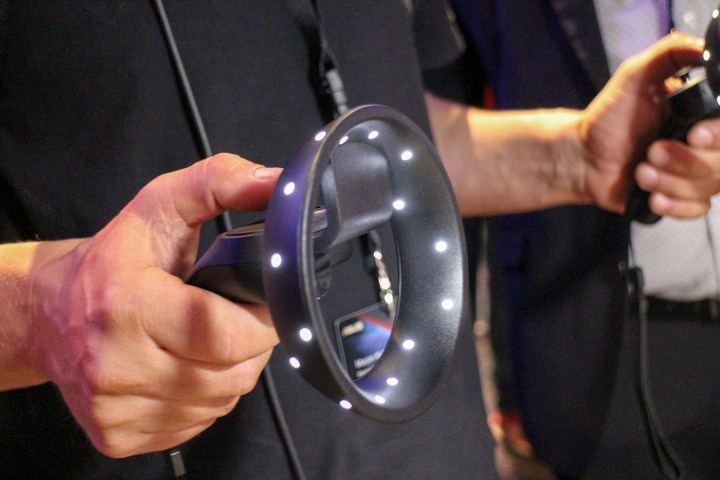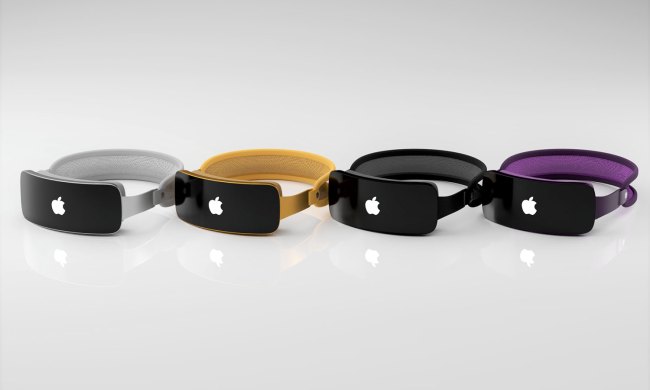
Samsung Windows Mixed Reality headset pic.twitter.com/pOelleMpew
— WalkingCat (@h0x0d) September 26, 2017
As you can see from the photos, the Samsung mixed reality headset borrows heavily from the design language popularized by the HTC Vive and Oculus Rift. The touch controllers appear to be either based on the Windows Mixed Reality controllers or that is exactly what they are.
A company like Samsung learning from pioneers in the PC VR space means we might finally see some real competition. As part of Microsoft’s Windows Mixed Reality ecosystem, the Samsung headset will likely borrow technology used in the enterprise-oriented Hololens.
Since we don’t see any external sensors here, it’s likely the Samsung headset will use the Hololens’ version of inside-out tracking, so it knows which way you’re facing without requiring external input — unlike the current-gen Oculus and Vive, which are reliant on the placement of sensors which track your movement and location.
Concrete details about the Samsung mixed reality headset are slim — it’s not even clear if these images are mockups or production images of a product we will see unveiled in the near future. It’s likely that the headset itself, if it exists in this form or another, will share a number of similarities with Dell’s mixed reality headset which is also part of the Windows Mixed Reality ecosystem.
The Dell Mixed Reality headset, aptly named the Dell Visor, features inside-out tracking, and it also has two front-facing sensors which could be used to create the eponymous mixed reality environment. It’s an important detail because the Samsung headset also appears to have sensors in roughly the same locations.
We don’t know much about what Windows Mixed Reality will actually do for most people, but the similarities between these two headsets seem to give us a peek behind the curtain at what we might expect from the upcoming Windows ecosystem.


